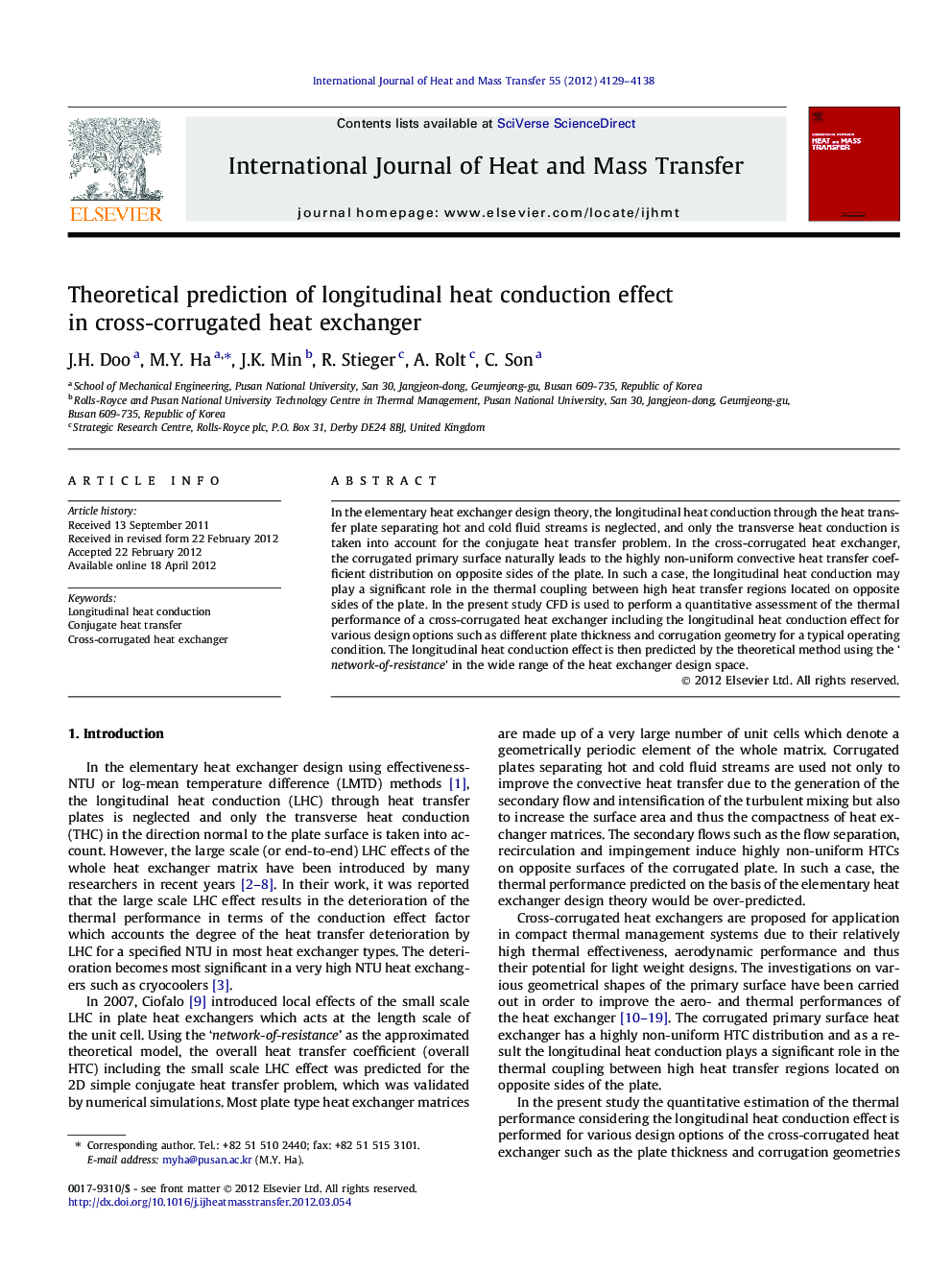| Article ID | Journal | Published Year | Pages | File Type |
|---|---|---|---|---|
| 659059 | International Journal of Heat and Mass Transfer | 2012 | 10 Pages |
In the elementary heat exchanger design theory, the longitudinal heat conduction through the heat transfer plate separating hot and cold fluid streams is neglected, and only the transverse heat conduction is taken into account for the conjugate heat transfer problem. In the cross-corrugated heat exchanger, the corrugated primary surface naturally leads to the highly non-uniform convective heat transfer coefficient distribution on opposite sides of the plate. In such a case, the longitudinal heat conduction may play a significant role in the thermal coupling between high heat transfer regions located on opposite sides of the plate. In the present study CFD is used to perform a quantitative assessment of the thermal performance of a cross-corrugated heat exchanger including the longitudinal heat conduction effect for various design options such as different plate thickness and corrugation geometry for a typical operating condition. The longitudinal heat conduction effect is then predicted by the theoretical method using the ‘network-of-resistance’ in the wide range of the heat exchanger design space.
